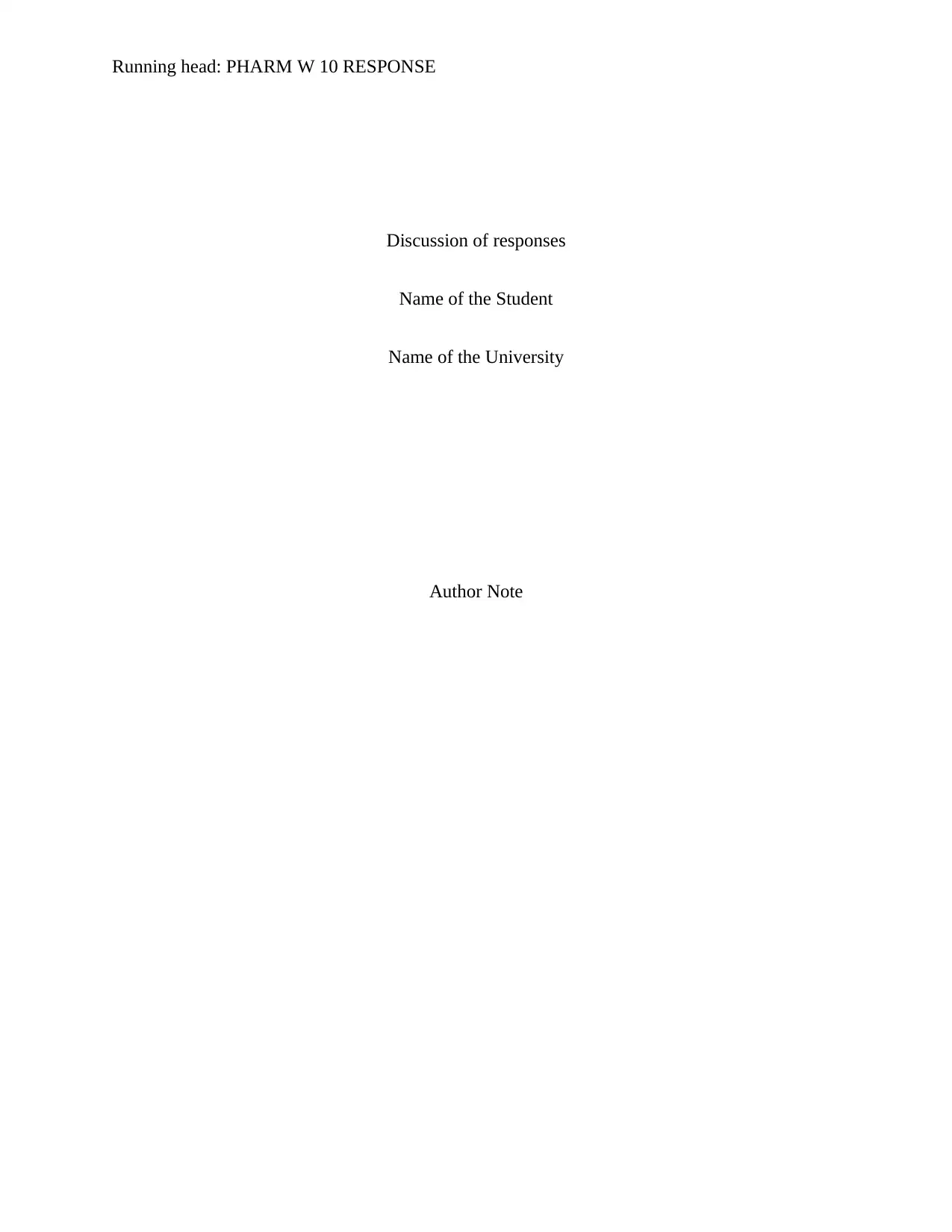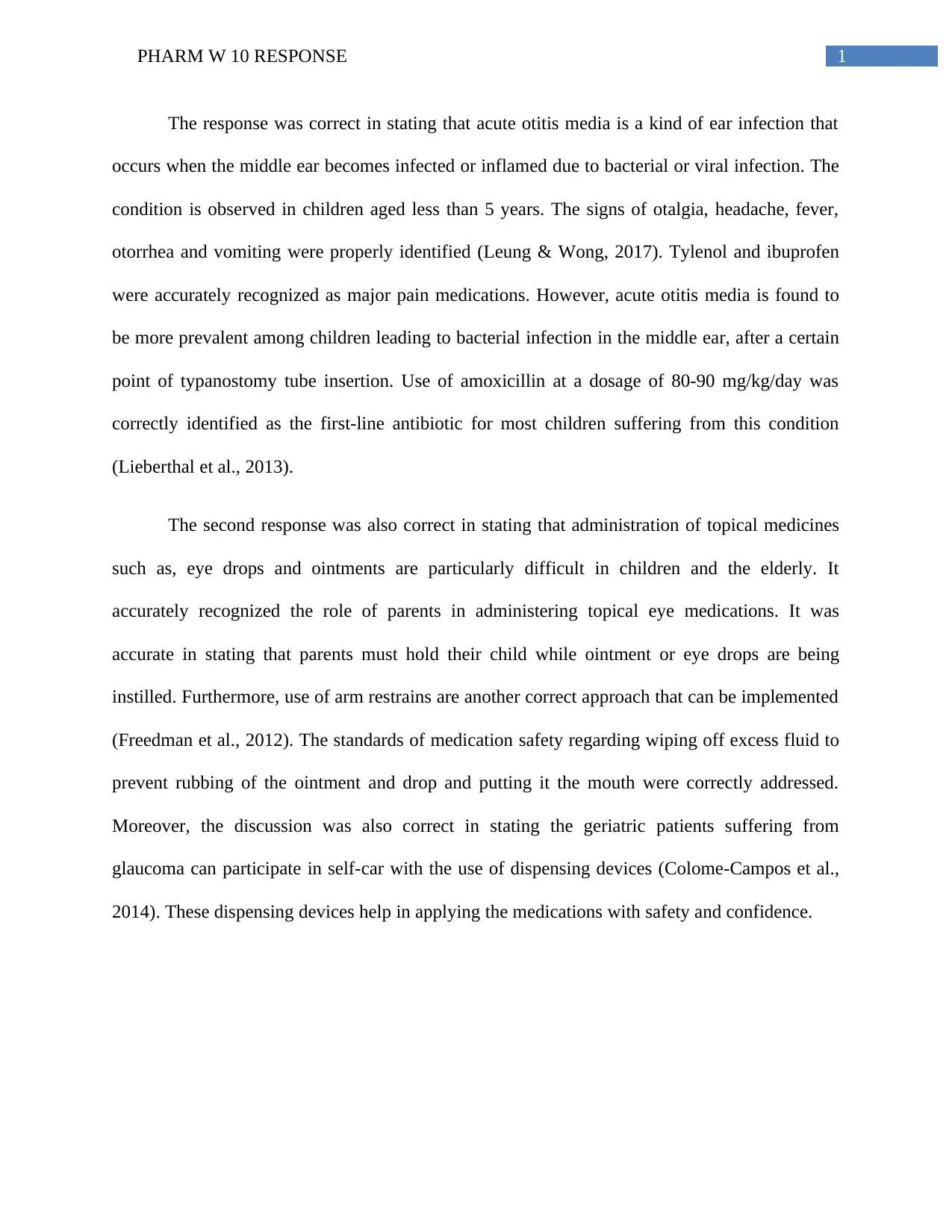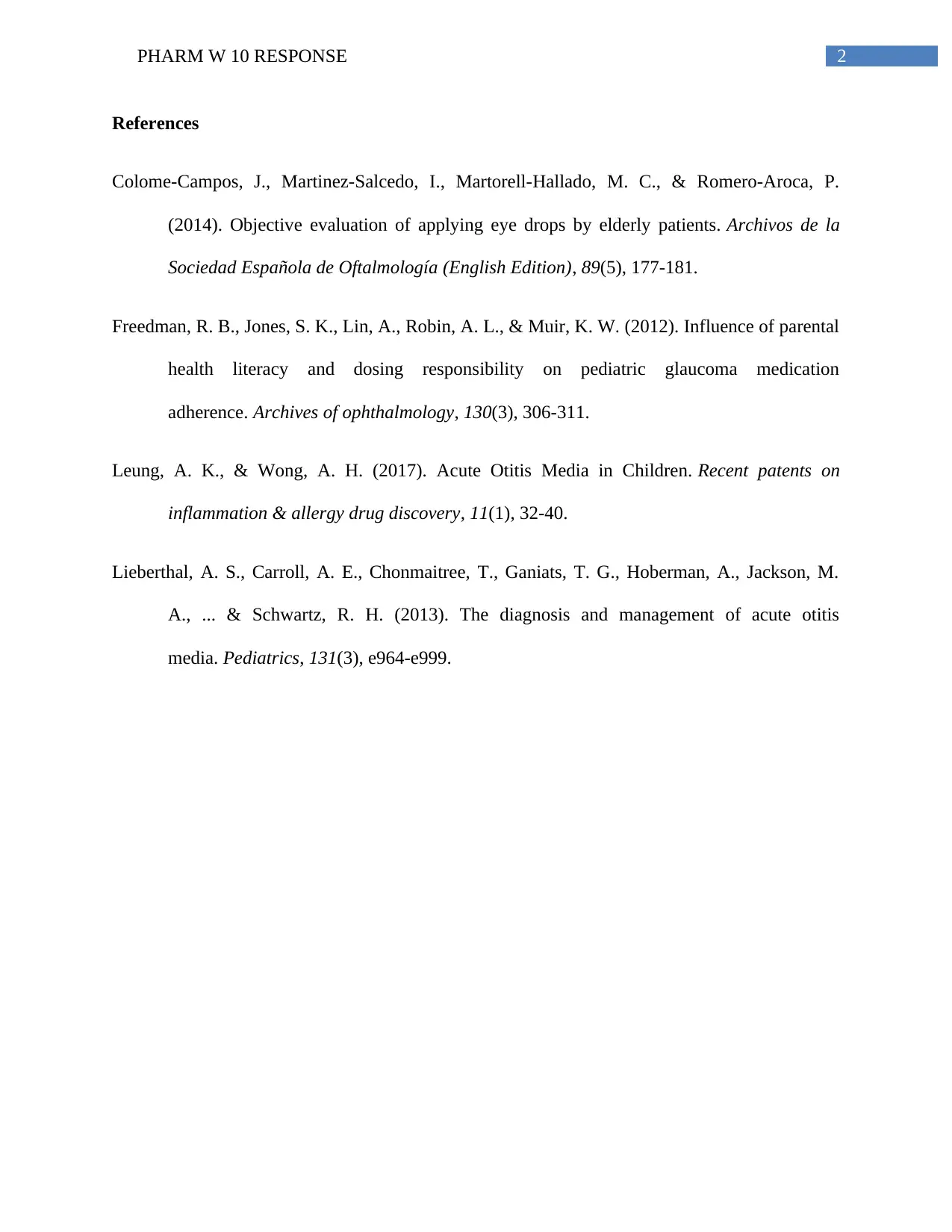Pharm W 10 Response: Evaluation of Acute Otitis Media and Eye Drop Use
VerifiedAdded on 2023/06/14
|3
|524
|106
Discussion Board Post
AI Summary
This document presents a student's responses to a discussion prompt, focusing on acute otitis media (AOM) and the administration of topical medications. The analysis correctly identifies AOM as a common ear infection in young children, highlighting symptoms and appropriate treatments like Tylenol, ibuprofen, and amoxicillin. It also addresses the challenges of administering eye drops and ointments, especially in pediatric and geriatric patients, emphasizing the role of parents and the use of dispensing devices to ensure medication safety and adherence. The discussion underscores key considerations for effective and safe medication practices in these vulnerable populations. Desklib offers more solved assignments and study resources for students.
1 out of 3




![[object Object]](/_next/static/media/star-bottom.7253800d.svg)